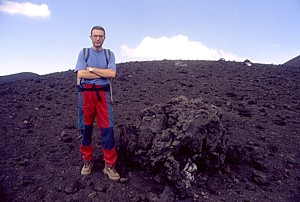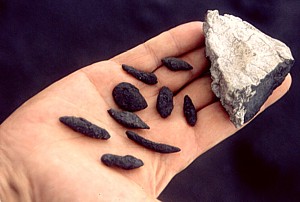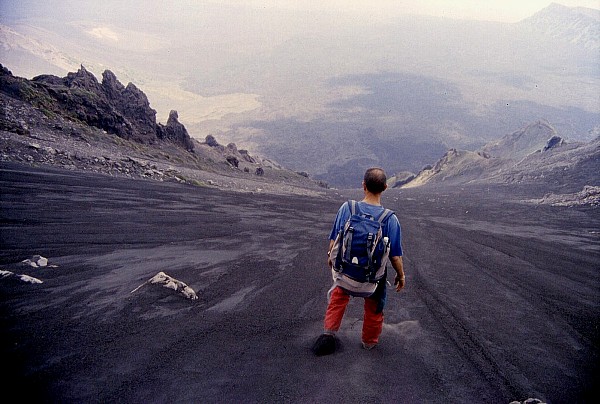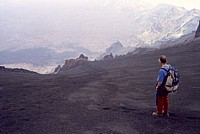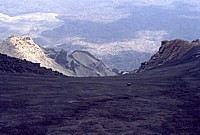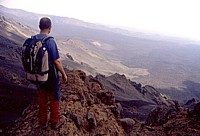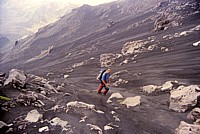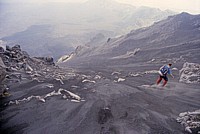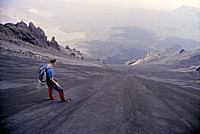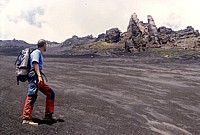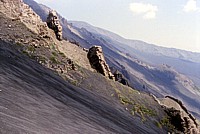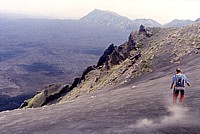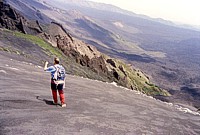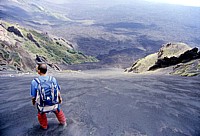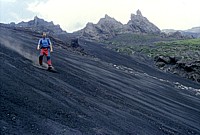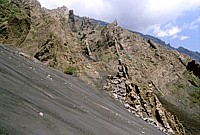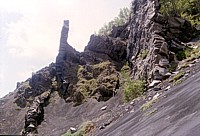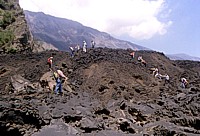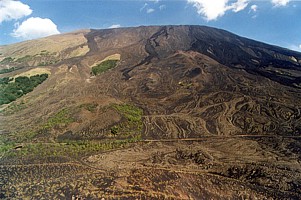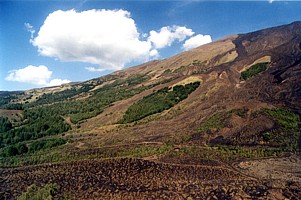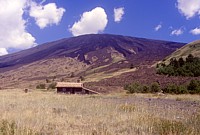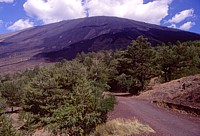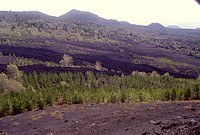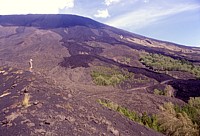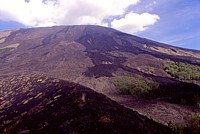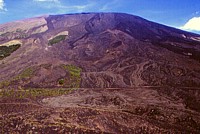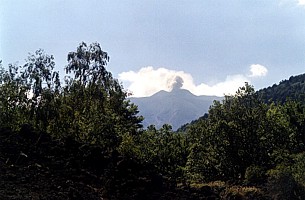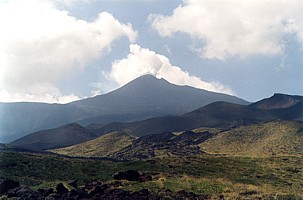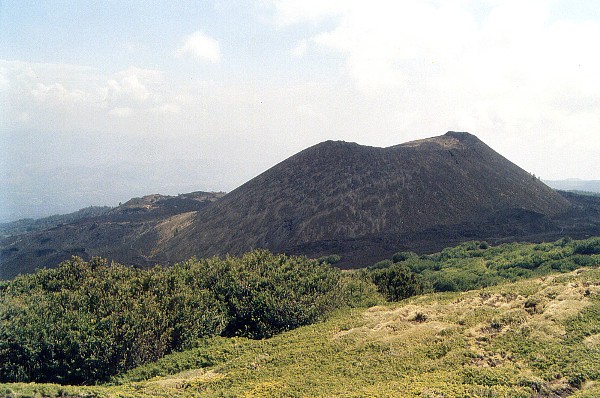| Etna
index |
||
| Geology | Geological history | Cones and craters |
| Eruptive characteristics | Eruptions before 1971 | Eruptions since 1971 |
| Etna and Man | References | Web sites |
| Weather forecasts | FAQ | Latest news |
Etna
photo gallery: 2002
Before the mountain moved - January to October 2002
![]()
Mid-June 2002 was a good occasion to do an excursion that few visitors to Etna will ever do, if they do not happen to stay a bit longer or know a mountain guide who offers this type of excursion: the descent into the Valle del Bove on the so-called "Sabbione della Montagnola" (loosely translated as "the Big Sand"). The descent starts at the Montagnola and goes down 700 m of vertical relief on a scree made of loose sand - just sand at the angle of repose. The enormous quantities of pyroclastics ejected in the 2001 and 2002-2003 eruptions have made the whole thing still more pleasant, since now there is not only sand on the slope, but much of the lavas which make up the floor of the Valle del Bove are also covered with tephra, which makes walking much easier. While the descent is simply an enormous quantity of fun, the Valle del Bove itself is one of the most suggestive areas on the volcano, and one of the least known. The following photographs were taken in mid-June 2002 and do not need much commenting except in a few cases. I thank Giuseppe Scarpinati for his company and for sharing his Etna-related experience; his presence in most of these photographs render, in my opinion, a better idea of the steepness of the descent and of the sheer dimensions of the surrounding landscape
Big, big fun: the descent into the Valle del Bove, June 2002
700
m of vertical relief to go, this is no good idea if you suffer
vertigo, but extreme fun if you don't. The look from the top of
the slope known as "Sabbione della Montagnola" down
into the Valle del Bove is breathtaking. However, to do this adventure,
one must be very familiar with the place, and choose a day of
stable weather. It cannot be done during the winter because the
slope is covered with ice, and people have died when venturing
on this slope during the winter |
Two months after the Valle del Bove excursion I was back on the hiking tracks of Etna, following a number of hikes on the Aeolian Islands (I worked as a guide for an adventure travel agency). This time it was a three-day hike all around Etna's southwestern, western, nortwestern, northern and northeastern flanks, following the "Forestale" (forest guard) dirt road, with overnight stays in mountain huts that do not have services. It is not exactly a walk in the park, but it brings you to places of stunning beauty, and if weather conditions are good, Etna can be seen in all its grandeur.
"Grand Tour" of Etna, August 2002
One
of the most conspicuous of Etna's numerous flank cones, Monte Nero
(Black Mountain) formed during a large, and strongly explosive,
eruption in 1646-1647 in the lower portion of the Northeast Rift.
This area is a volcanic wonderland, with countless cones and craters
of different size, color, form, and age. Darker, more recent lavas
that can be seen at the near base of the 120 m-tall cone were erupted
in 1911 and 1923. Still more recently, after this photograph was
taken, the Northeast Rift erupted again, and the most easy access
routes to this area were cut by lava flows. Monte Nero and its surroundings
are presently one of the most remote places on Etna. Photograph
was taken 19 August 2002 |
Return to the Etna photo gallery
Copyright © Boris Behncke, "Italy's Volcanoes: The Cradle of Volcanology"
Page set up on 11 August 2003

